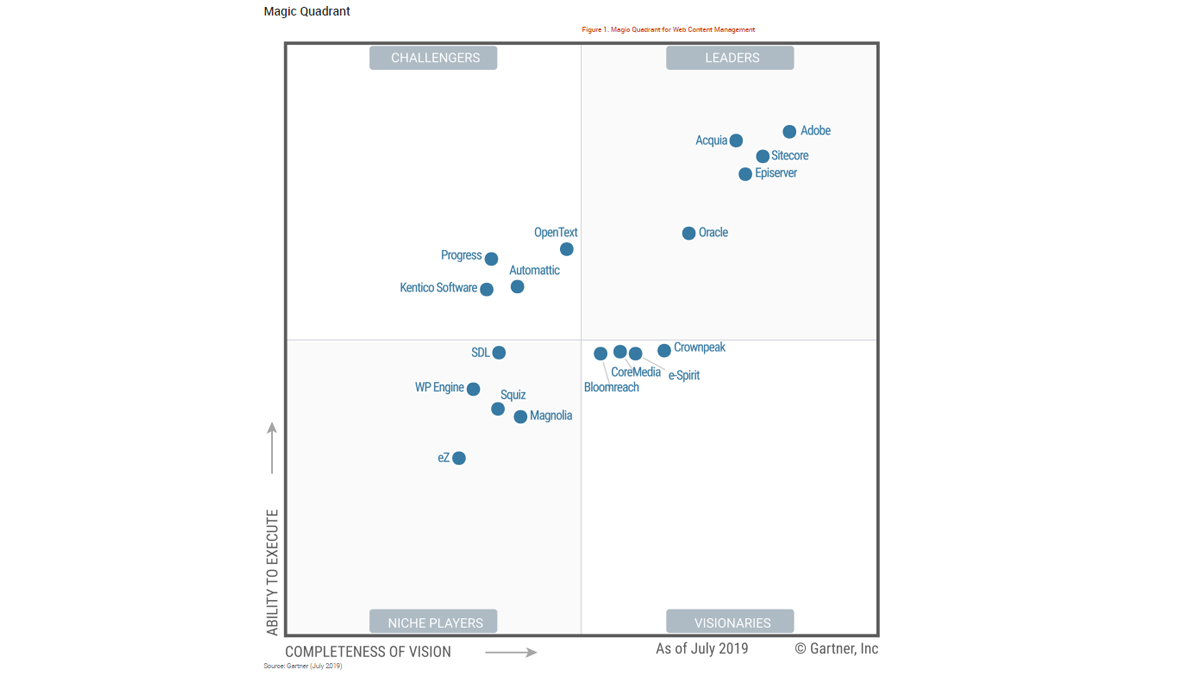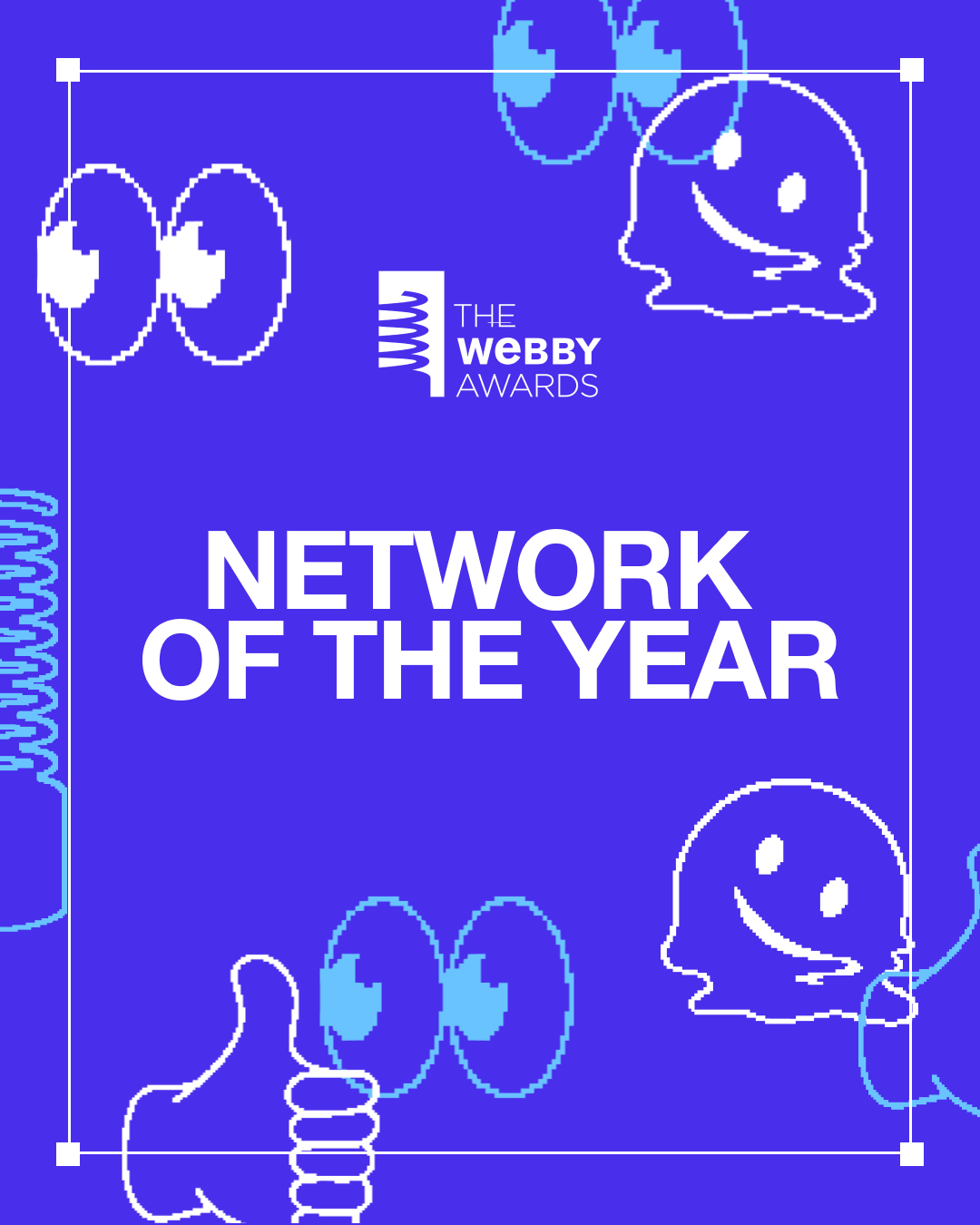Highlights from Gartner’s magic quadrant for web content management

Adobe experience manager (AEM)
Regaining its leading position this year, Adobe Experience Manager remains a strong choice for organisations that have reached a certain level of digital maturity. Providing the ability to design and deliver sophisticated digital experiences across multiple touchpoints, AEM is used by global brands including Mastercard, Nissan, Sky and Dell.
Gartner advises that AEM is a pricey choice, and that some customers feel that there’s a lack of guidance from Adobe on how to get the most out of the solution. Although Adobe has launched an Experience League enablement program, it’s advisable to work with an experienced partner agency to ensure your organisation is maximising its investment. Gartner warns that AEM expertise can come with a heavy price tag, and the best teams are rarely available, so it’s advisable to do your due diligence when it comes to selecting a partner.
Sitecore
Although having dropped slightly below Adobe this year after being declared leaders in 2018, Sitecore still has strong appeal for many organisations, and its client base ranges across multiple industries and company sizes. The release of the new Sitecore KickStart, aimed at low-to-mid market, should help its popularity even further.
It’s easy to see why it’s selected by such a broad range of companies, given its architecture and JavaScript Services providing headless capabilities for multichannel delivery and content agility, teamed with its advanced personalisation abilities and intuitive interface. Notable brands using Sitecore include DEPT®’s clients Triumph Motorcycles, Johnson Matthey and Formula-E.
As with AEM, Gartner states that some customers feel that they receive below-average support from Sitecore, preventing them from truly maximising the solution. Pricing complexity has also lead to customers feeling that there is a lack of transparency, and that the cost of moving from on-premise to the cloud is high.
As with AEM, it’s advisable to work with an experienced partner agency to ensure your business is utilising Sitecore’s advanced capabilities. Sitecore has a large partner ecosystem, but the best value will come from working with a partner that has tangible experience of implementing the full breadth of Sitecore’s capabilities, whether that be setting up personalisation, upgrades or cloud migrations.
Episerver
Episerver’s product portfolio covering content management, digital marketing and commerce has helped it to maintain its position in the Leaders’ quad. Its packaging and bundling options are aligned to typical use cases, and it is highly regarded for its usability across IT and business teams. For example, event-triggering AI-based personalisation and customer journey analytics are embedded into the WCM processes, so do not require any specific process or expertise to utilise.
Customers are fans of its simple subscription pricing, which appeals to enterprises and midsize organisations alike.
Despite its leading position, brand awareness remains relatively low for Episerver. This isn’t helped by the lack of large digital agencies in its partner ecosystem, which also contributes to Episerver’s customers feeling under-supported in some regions.
Crownpeak
Crownpeak Digital Experience Management has remained stable in the quadrant, and is acknowledged for its short time-to-value for customers, due to its “low-code, component-based approach, packaged integrations, decoupled, front-end-agnostic architecture and SaaS model”.
A key differentiator for Crownpeak is its focus on digital governance and consent; for example, if it had of been implemented, its Digital Quality Management (DQM) tool could have prevented British Airways from that painful £183m data breach fine.
Support is deemed good when compared to many vendors however, as the client-base scales, it will need to grow its partner eco-system, which is small in comparison to its competitors.
Bloomreach
Surprisingly, Bloomreach has dropped into the visionary category after being rated leaders last year. Bloomreach Experience Manager (brXM) was commended for its “practical, yet powerful UI for managing complex multisite, multilingual sites,” its API-driven, open architecture, and its incorporation of AI.
Despite these strong benefits, brand awareness is relatively low, which means it’s missed off many shortlists, even when it would be a good choice. Having historically concentrated on retail and e-commerce sectors, Bloomreach is now aiming to expand into other verticals. If successful at this strategy, they should secure a spot in the Leaders’ quad again.
As with many vendors, Bloomreach’s partner ecosystem is on the small side, and due diligence is certainly advisable when seeking a partner agency to ensure they have tangible experience.
SDL
Despite being on the cusp of moving back into the Leaders’ quad last year, SDL Tridion Sites has slipped into the niche players. It remains a very strong choice for global enterprises requiring multisite, multi-lingual content distribution, due to Tridion Sites BluePrint Model and SDL’s leadership in language translation tech. Notable global brands using Tridion Sites include DEPT®’s clients Omron, Sodexo and Bourne Leisure.
It was also commended for its content APIs and GraphQL-based content delivery capabilities, which “enable the use of SDL Tridion Sites in a headless manner (in addition to its traditional use as a classic decoupled architecture).”
In recent years, SDL has focused on its translation software and services business, which means its WCM offering has taken a hit, both in regards to updating its UI and sales focus. This has been felt by existing partners, and its partner ecosystem is decreasing. Tridion Sites clients have turned to System Integrators, which is not ideal for brands who prefer to work with digital-led agencies.
Creating a WCMS shortlist?
Gartner’s Magic Quadrant for WCMS is a valuable resource for those seeking to implement a new content management solution, but there are many factors at play when selecting your technology shortlist. It’s advisable to team up with a tech-agnostic agency (such as Dept), who can advise based on your specific business requirements, and who have hands-on experience of implementing solutions for businesses within your sector or with similar challenges.
More Insights?
View all InsightsQuestions?
VP of Marketing, EMEA




